Waroeng Bakso: XXL Indonesian meatball soup that’s only available 2 days a week
Bakso, aka Indonesian meatball usually served with noodles and soup, is so popular in Indonesia that you can find it everywhere, by street vendors and restaurants alike. Arguably, it’s not so commonplace in Singapore, but I might’ve just found a hidden gem that Indonesian locals head to for their bakso fix: Waroeng Bakso.
Located within City Plaza at Paya Lebar, Waroeng Bakso is only open on Saturday and Sunday, and its meatballs are incredibly chunky— so chunky that I’d say it could be compared to the size of my fist!
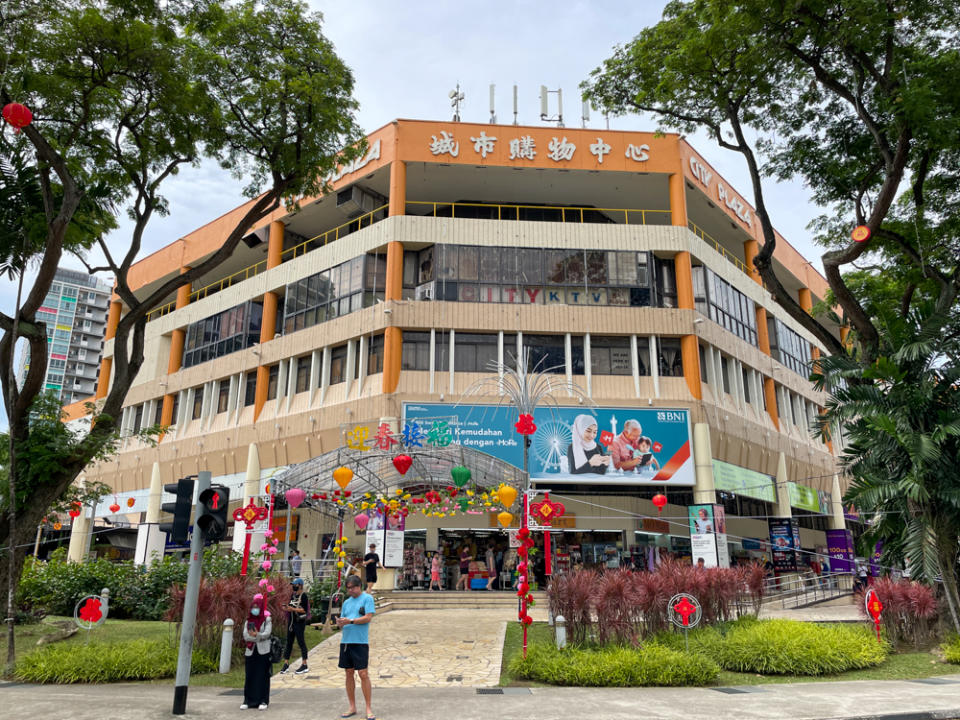
Having been around since 1981, City Plaza is a pretty old mall in Paya Lebar that’s known for having plenty of clothing retail shops, remittance companies and Indonesian tidbits. Also, it’s where the famous Arnold’s Fried Chicken first started out in 1984.

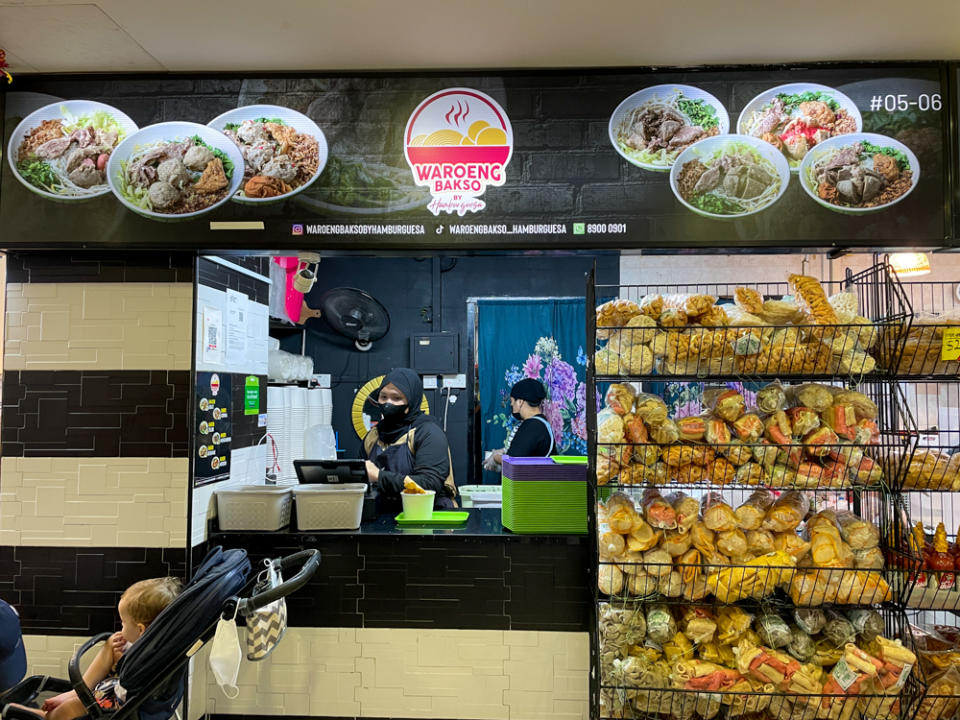
Not many folks know this, but City Plaza has a small food court on the 5th floor. Thanks to the odd layout of the mall, you’ll have to take separate escalators to find it. The L-shaped food court might not be the largest or most modern, but it’s where you can find Waroeng Bakso.
What I tried at Waroeng Bakso
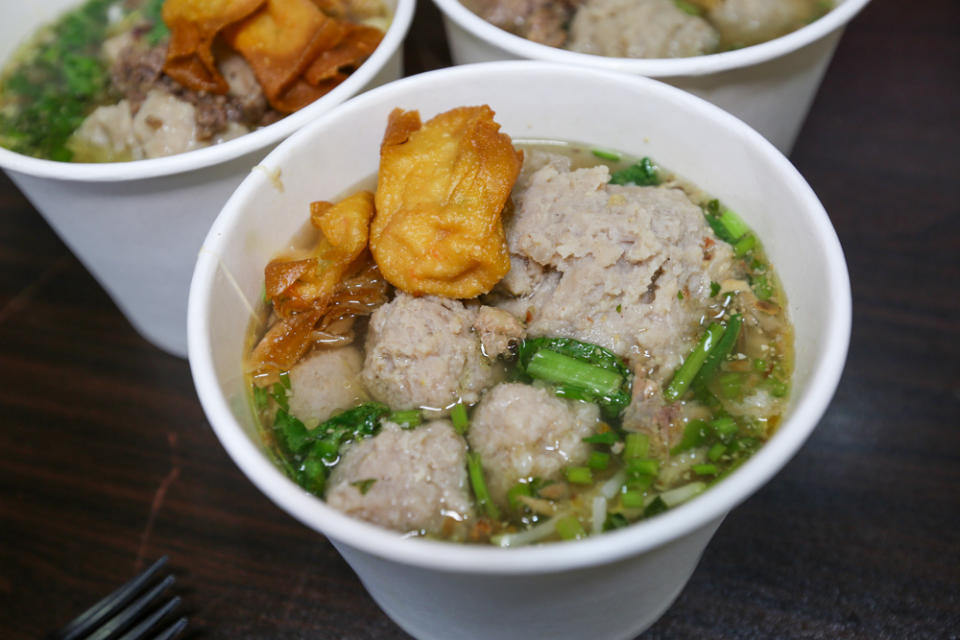
I decided to start the ball rolling with the XXL meatballs that I came here for— Bakso Beranak (S$12).
In Bahasa Indonesia, “beranak” means to give birth. In a similar fashion, Bakso Beranak mimics this as it comprises small meatballs inside a larger meatball— like a baby inside a mother’s womb.
While the traditional bakso beranak is indeed served that way— with small meatballs stuffed inside a large meatball— the staff at Waroeng Bakso told me that they’ve placed the smaller meatballs outside for easy eating.
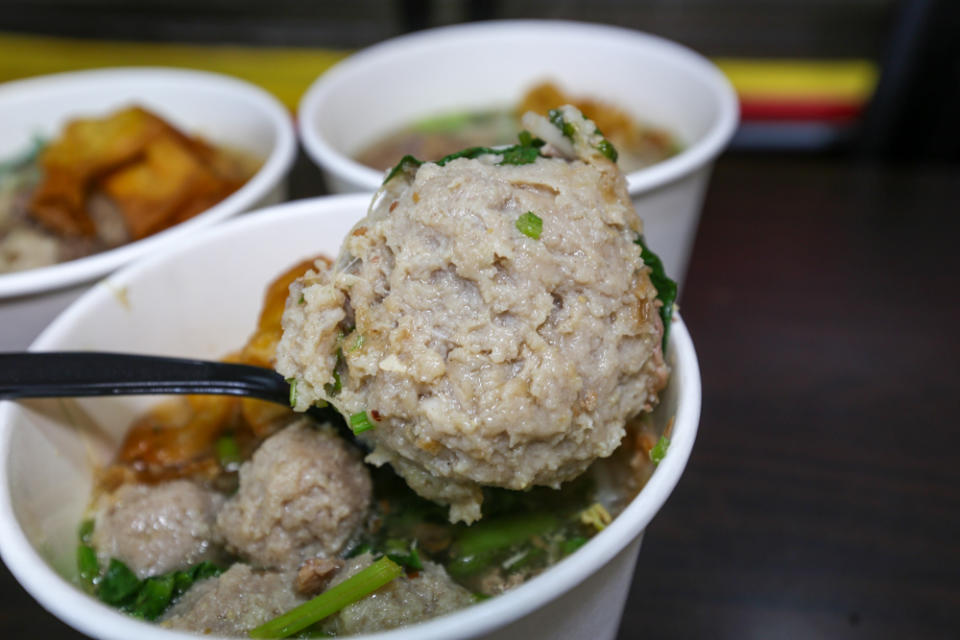
This was such a large meatball that I had problems picking it up with the plastic utensils provided!
For starters, I spent about a couple of minutes staring at the large meatball, wondering how I was supposed to eat it. Do I simply bite into it? Or do I chip off bits of meat using my utensils? In fact, when I tried to lift it up with a spoon, the wobbly utensil bent dangerously, as if it was about to break.
I eventually went ahead and took a large bite out of it. Instantly, I was amazed by the sheer meatiness of it. This was pure juiciness, and I loved how the meat was still soft and tender, yet fully cooked through despite its immense size.
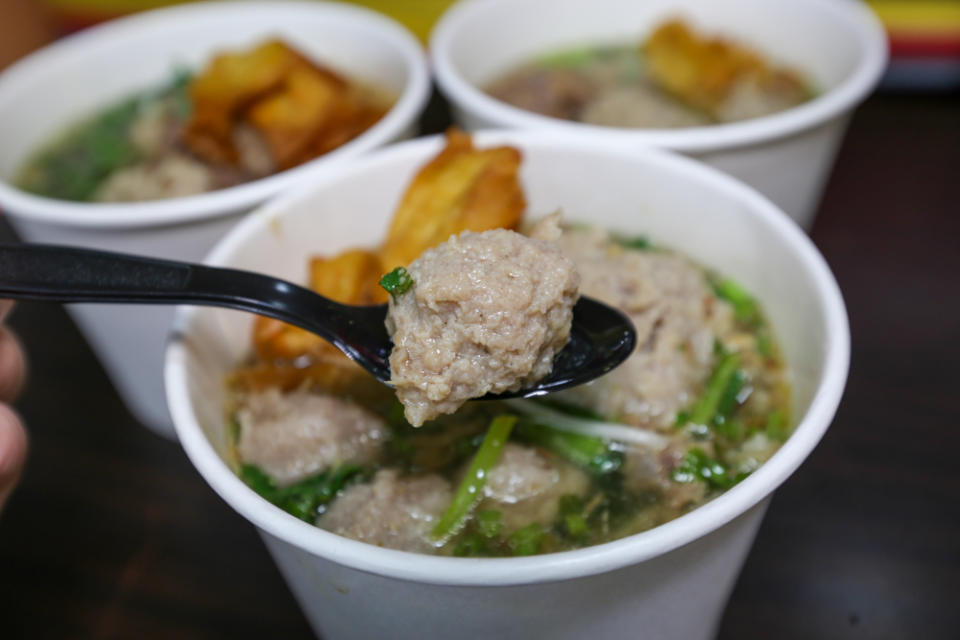
While I’m all for XL-sized food, I was thankful that Waroeng Bakso had placed the smaller meatballs outside, as it made for easier eating.
I loved how I could tell that each meatball had been handmade. It came in oblong, irregular shapes that I popped into my mouth like candy.
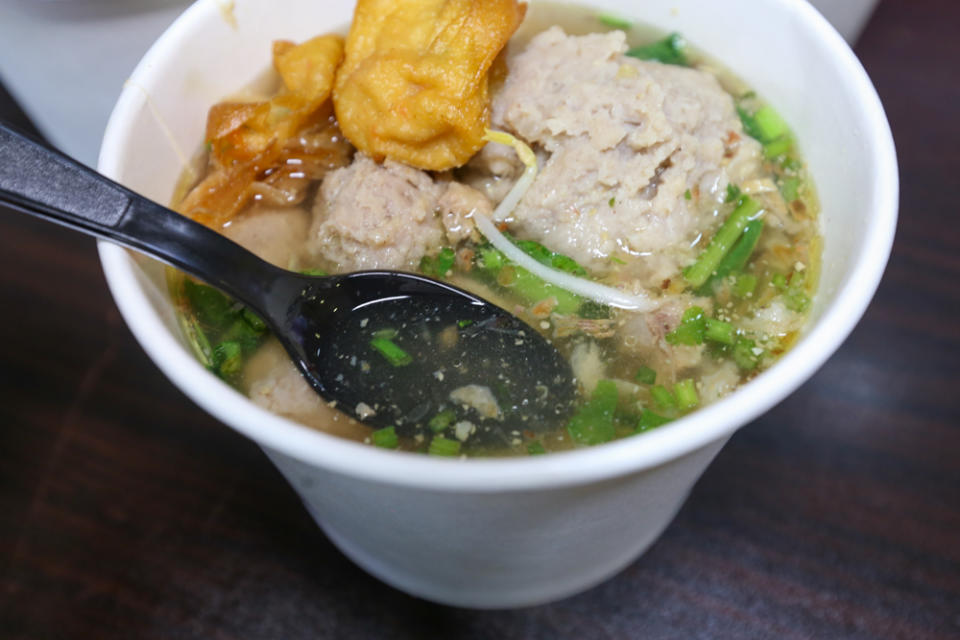
Most bakso soup broths are made of beef broth and other aromatics. Waroeng Bakso’s broth is no different— there was a rich beefy-like base, which was made fragrant thanks to the addition of garlic and plenty of celery. I could also taste a faint spice from white pepper. The result is a hearty and savoury broth, albeit a little oily.
Interestingly, as I’ve never had authentic bakso before, the closest comparison I could relate this to would be a mix between pho and soto ayam broth.
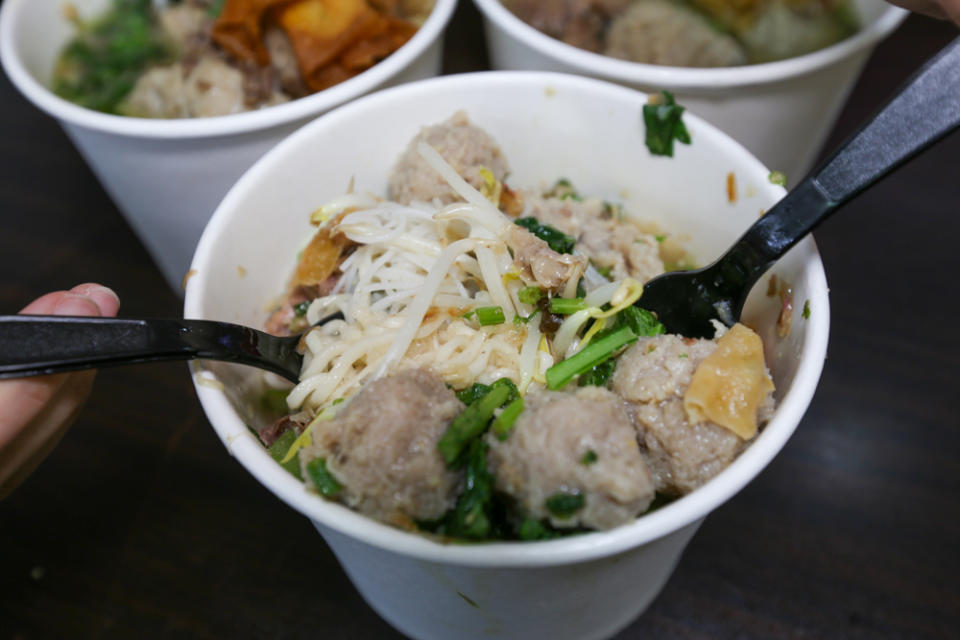
My Indonesian friend, whom I brought along for the meal, tells me that bakso is typically served with a mixture of noodles— either bee hoon and yellow noodles, or bee hoon and homemade noodles which resemble maggi. As for Waroeng Bakso, each bowl came with a mixture of bee hoon and maggi.
While the noodles were pretty ordinary, what I loved was how loaded each mouthful was, as there were plenty of other ingredients in the bakso. I spotted bean sprouts, spring onions, chopped choy sum, shallots, which made every slurp varied in texture and flavour.
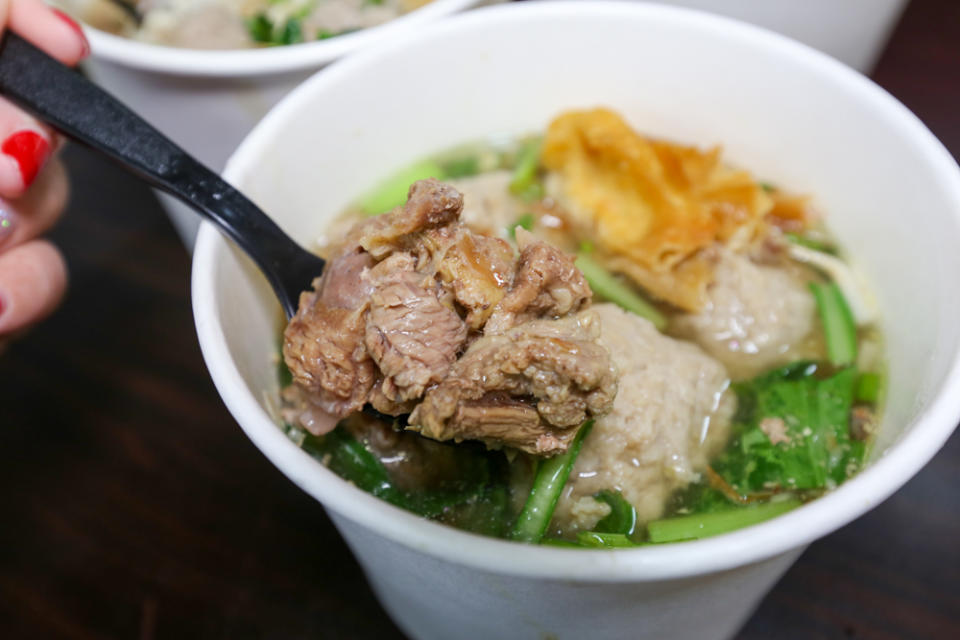
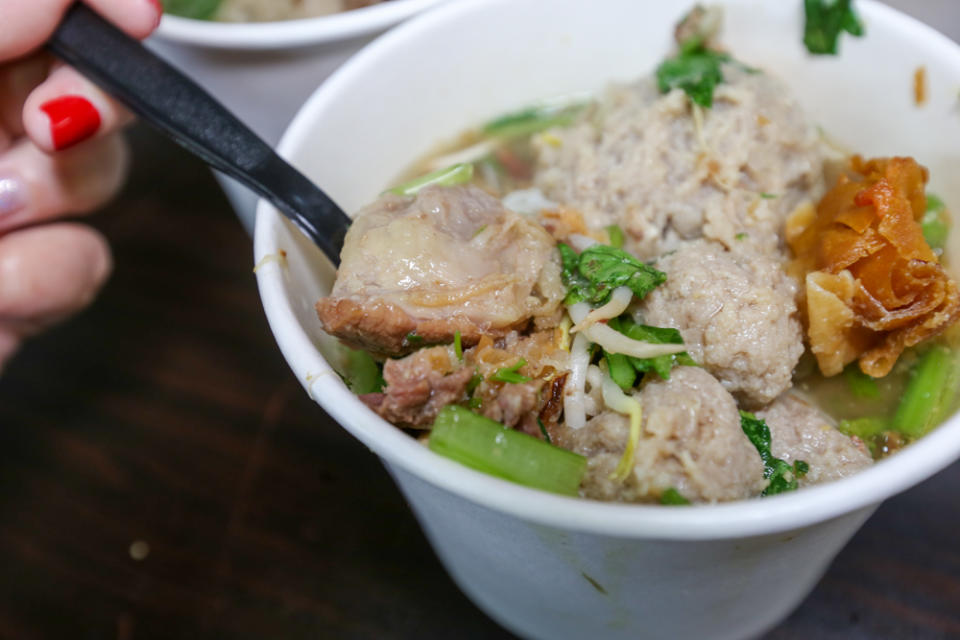
In each bowl of bakso were thick, tender chunks of beef, which melted in my mouth as they had a good amount of soft fat and juicy meat.
My Indonesian friend tells me that most Indonesian bakso dishes are meant to be cheap, averaging out to cost around 10k rupiah per bowl (aka S$1) and wouldn’t come with meat like this. “That might explain the S$12 price tag here,” he explains.
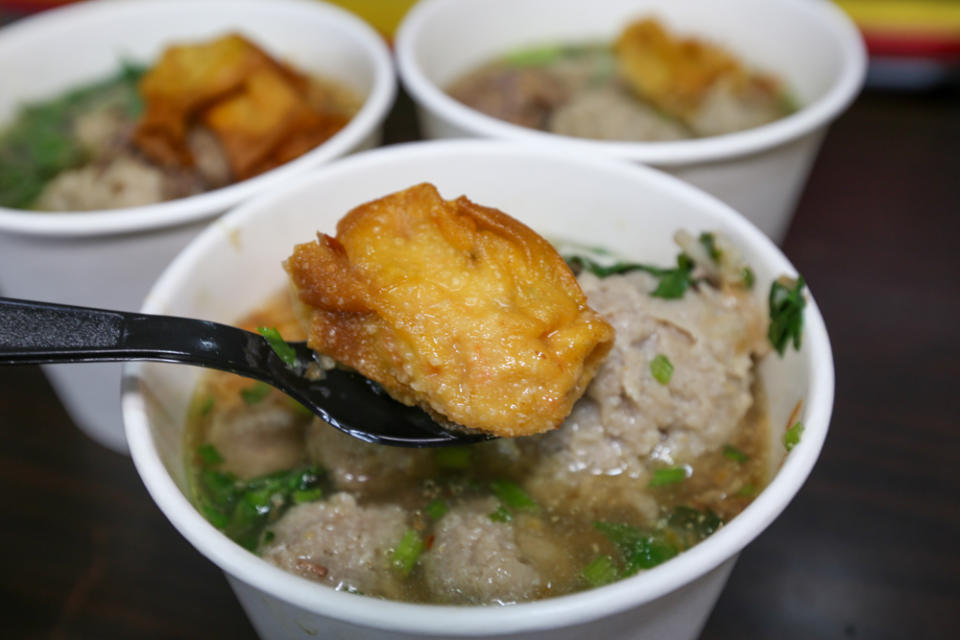
By the time I got to fried wantons, which were the last ingredient in my bowl of bakso, it had been soaked to the point of no return. Regardless, they were tasty and filled with QQ fishcake-like meat.

I decided to try another XXL meatball on Waroeng Bakso’s menu: Bakso Mengandung (S$12), which comes with a giant bakso filled with minced meat.
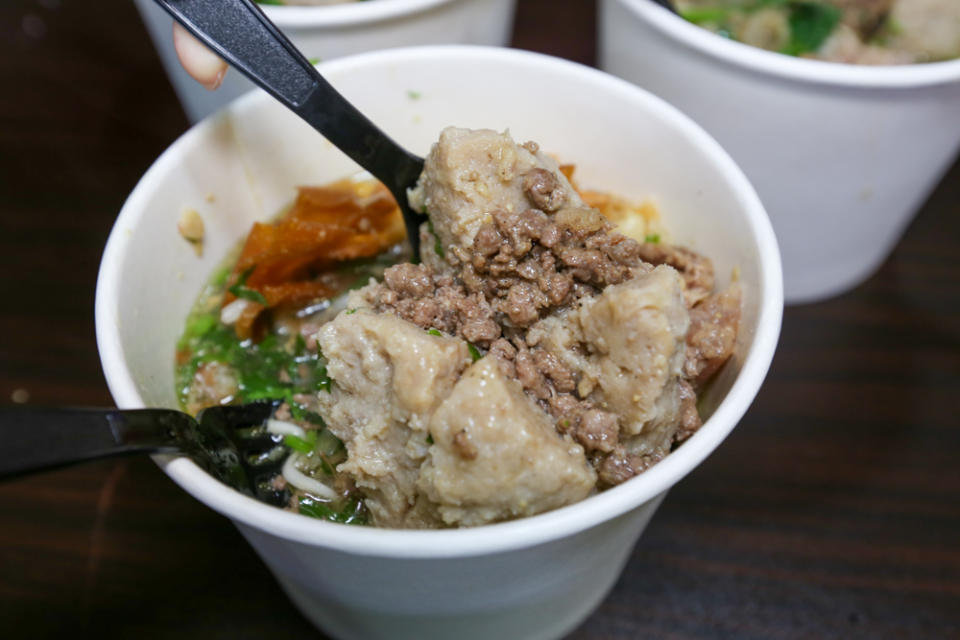
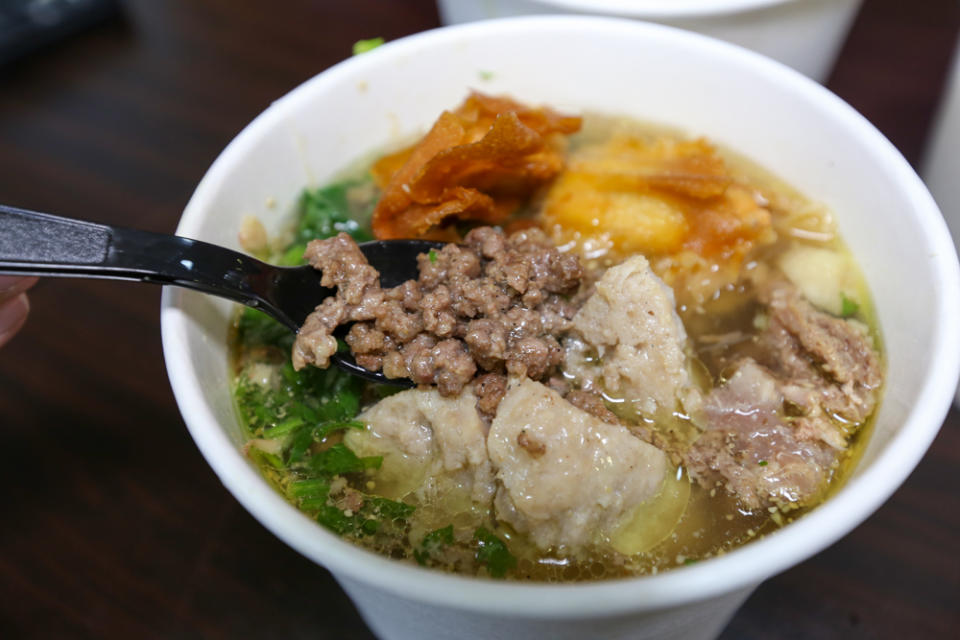
As compared to Waroeng Bakso’s Bakso Beranak, the Bakso Mengandung came with a giant, fist-sized meatball that had been cut open at the top, almost like a huat kueh, with plenty of springy minced meat.
While most of the Bakso Mengandung was the same as the Bakso Beranak, I enjoyed the addition of minced meat, which gave each spoonful of noodle soup a different mouthfeel.
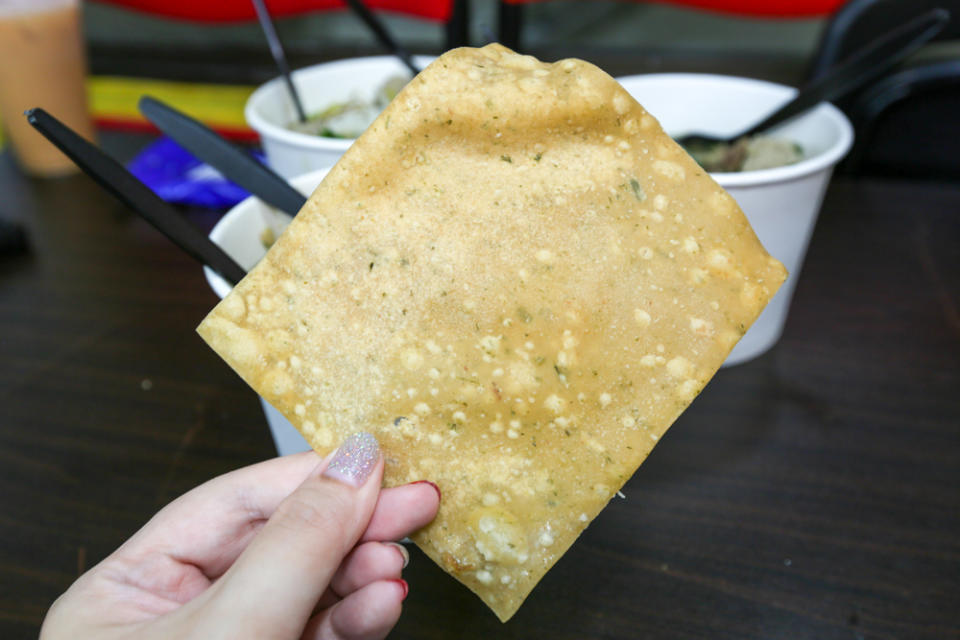
Each bowl of bakso came with a large cracker. Without knowing what to call it, I ended up referring to it as keropok.
This was absolutely delicious, and I ended up eating the entire cracker at one go. It reminded me of deep-fried wanton skin— thicker than your usual emping or tapioca chips but still incredibly crunchy, with a wheat-like roastedness and a dusty texture that made it addictively impossible to stop once you’ve started eating it.
Final thoughts
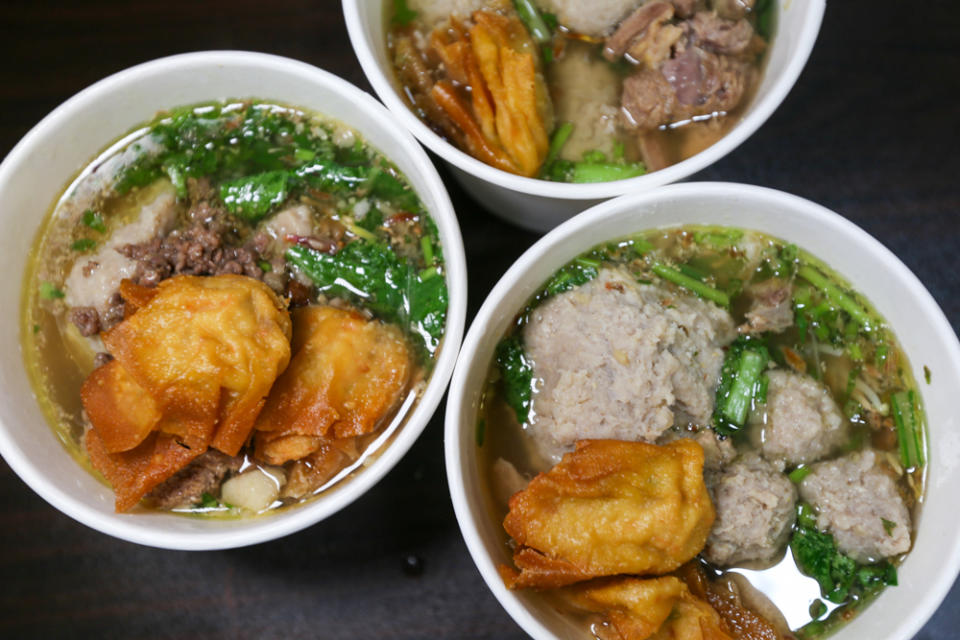
This was my first time eating bakso, and I found myself enjoying it immensely. I loved the combination of hearty beef broth with a wide variety of noodles, ingredients and garnishes, and more importantly, how meaty everything was. Depending on which bowl of bakso you ordered, you’ve got your giant, fist-sized meatball, smaller meatballs, minced meat, tender beef chunks and deep-fried wantons, which were all delicious on their own.
My only gripes would be Waroeng Bakso’s presentation and cost. Serving bakso in takeaway containers isn’t the most environmentally friendly, and using plastic utensils to eat my bakso proved to be difficult at some points. As for cost, the cheapest bowl of bakso at Waroeng Bakso cost S$8, while the priciest was S$12. Definitely not the most wallet-friendly around, especially considering you could get a bowl of bakso in Indonesia for as cheap as S$1.
Regardless, this was a good introduction to bakso, and I’d recommend this to anyone who’s yet to try this traditional Indonesian dish. Beat the queues and come early though, and most definitely not on Sundays!
Expected damage: S$8 – S$12 per pax
The post Waroeng Bakso: XXL Indonesian meatball soup that’s only available 2 days a week appeared first on SETHLUI.com.


